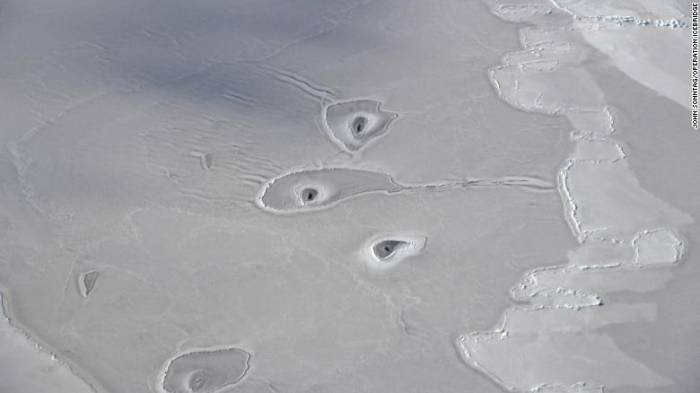But luckily, this puzzling picture of holes in a sheet of Arctic ice appears to be more of an interesting brain teaser than the discovery of, say, giant ice worms.
The photo was taken in the Beaufort Sea near the Arctic Ocean by NASA's Operation IceBridge. Every year, during Operation IceBridge, a fleet of research aircraft fly over both polar regions, capturing detailed and fascinating images of some of Earth's most frigid and least-visited locales.
In the middle of this image, you can see three spots: Those are the holes in the ice. To the left of them, you can see what NASA terms "wave-like features," and to the right, tracing a vertical line through the image, "finger rafting."
According to NASA, finger rafting happens when ice floes collide, forming a jagged ridge at the spot of their joining.
But it's the holes that really piqued NASA's interest.
"It's definitely an area of thin ice, as you can see finger rafting near the holes and the color is gray enough to indicate little snow cover," IceBridge project scientist Nathan Kurtz said in a NASA release. "I'm not sure what kind of dynamics could lead to the semi-circle-shaped features surrounding the holes. I have never seen anything like that before."
The photo was featured as NASA's April 2018 "Puzzler," a series that features an interesting image and encourages people to guess what they are seeing. Which makes sense, since even the people who took the picture are doing some guessing.
According to a release from NASA, there are a few working theories: The holes could be a result of warm paths of water flowing underneath the ice, or they could be the result of some marine mammal, like a harp seal, poking up from under the ice's surface to breathe.
CNN
More about: NASA
















































